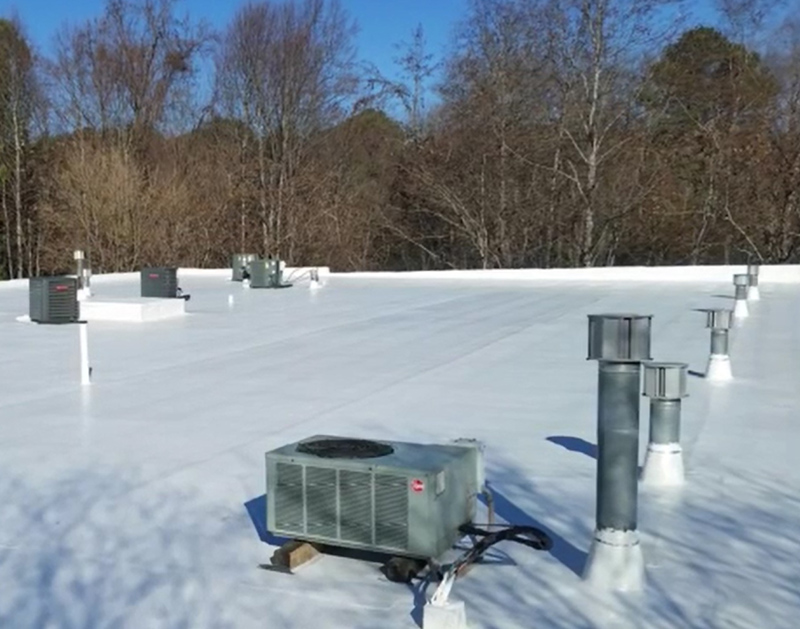Warning Signs of Overstress Conditions during a Snow Event
Overstressed roofs typically display some warning signs. Wood and steel structures may show noticeable signs of excessive ceiling or roof sagging before failure. The following warning signs are common in wood, metal, and steel constructed buildings:
- Sagging ceiling tiles or boards, ceiling boards falling out of the ceiling grid,
and/or sagging sprinkler lines and sprinkler heads - Sprinkler heads deflecting below suspended ceilings
- Popping, cracking, and creaking noises
- Sagging roof members, including metal decking or plywood sheathing
- Bowing truss bottom chords or web members
- Doors and/or windows that can no longer be opened or closed
- Cracked or split wood members
- Cracks in walls or masonry
- Severe roof leaks
- Excessive accumulation of water at nondrainage locations on low slope roofs
Key Safety Issues and Risks
Snow accumulation in excess of building design conditions can result in structural failure and possible collapse. Structural
failure due to roof snow loads may be linked to several possible causes, including but not limited to the following:
- Unbalanced snow load from drifting and sliding snow. When snow accumulates at different depths in different locations on a roof, it results in high and concentrated snow loads that can potentially overload the roof structure.
- Rain-on-snow load. Heavy rainfall on top of snow may cause snow to melt and become further saturated, significantly increasing the load on the roof structure.
- Snow melt between snow events. If the roof drainage system is blocked, improperly designed or maintained, ice dams may form, which creates a concentrated load at the eaves and reduces the ability of sloped roofs to shed snow. On flat or low
slope roof systems, snow melt may accumulate in low areas on roofs, creating a concentrated load. - Roof geometry. Simple roofs with steep slopes shed snow most easily. Roofs with geometric irregularities and obstructions collect snow drifts in an unbalanced pattern. These roof geometries include flat roofs with parapets, stepped roofs, saw-tooth roofs, and roofs with obstructions such as equipment or chimneys.

